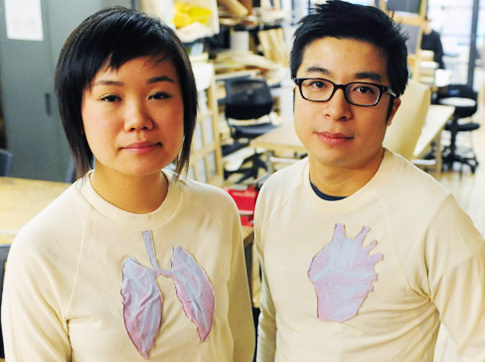Future Now
The IFTF Blog
The Canary in the Coal Mine
One of my favorite new products of the past couple of years is something called Glow Caps. In effect, they're very smart pill bottles. They light up to remind someone to take a pill; if the person misses the ambient reminder of the light, the pill bottle will start making noise to drive home the point: Take your pills.
I like Glow Caps because it is at once very simple and very powerful way to improve the design of an everyday object like a pill bottle. And thanks to the dropping costs of sensors, and an expanding set of tools from unlikely fields like synthetic biology and genetics, we're going to see a much wider variety of efforts to turn our environments and everyday objects into sensemaking objects.
Take this experimental Department of Defense sponsored project that involves genetically engineering plant proteins to detect explosives and change color when chemical traces of explosives are nearby. As Spencer Ackerman describes it in Wired:
Picture this at an airport, perhaps in as soon as four years: A terrorist rolls through the sliding doors of a terminal with a bomb packed into his luggage (or his underwear). All of a sudden, the leafy, verdant gardenscape ringing the gates goes white as a sheet. That’s the proteins inside the plants telling authorities that they’ve picked up the chemical trace of the guy’s arsenal.
This isn't the only recent example of innovating clever ways to detect and communicate environmental risks. Some students at NYU recently developed a t-shirt with pictures of internal organs that change color in response to air pollution and other environmental toxins.

It works, essentially, through tiny sensors that can detect carbon monoxide, wires that send currents through the shirts themselves, and a type of fabric that noticeably changes color due to heat. According to the New York Daily News, students who wore the shirt reported, among other things, that they smoked a lot less because they felt guilty seeing the organs on their shirts change color.
These, I think, are clear examples of the sorts of simple reminders, that, as we have an increasing array of tools to redesign even cheap consumer goods, will be meaningful to people. Organs that change color are simple, intuitive, and relatively unobtrusive. But they're all very much about identifying and, at least communicating, some sort of risk in the world. They're alerts about potential problems, but do little to point toward healthy locations or other things that are going well.
What I think is harder to figure out is how these sorts of simple interfaces could be used not just to notify someone of a potential risk, but to point us toward positive things that might improve our happiness and well-being. Put differently, nobody sticks an "everything's okay" alarm in their house. It would seem strikingly unnecessary.
But say we were to try to adapt the pollution-sensing t-shirt to demonstrate something positive. What would it show? Most people probably wouldn't want to broadcast their mood on their t-shirt. In other words, I think the design challenges of using ambient reminders to indicate something positive will be much, much harder. At the same time, I think understanding how to build in reminders that point toward positive things, as well as give warnings, will be a critical challenge in the next decade.



